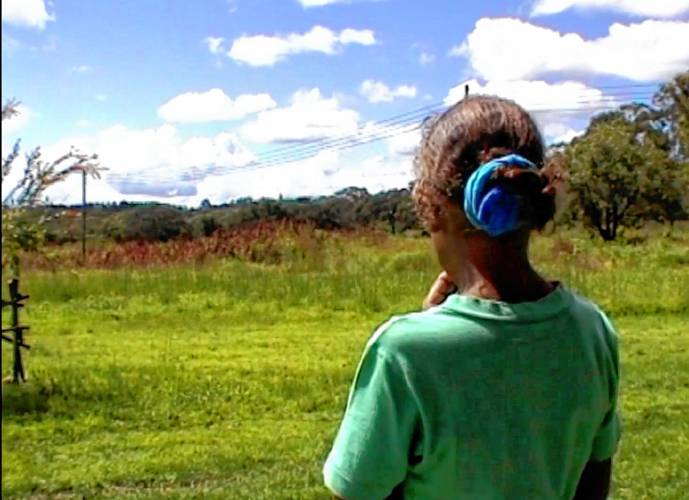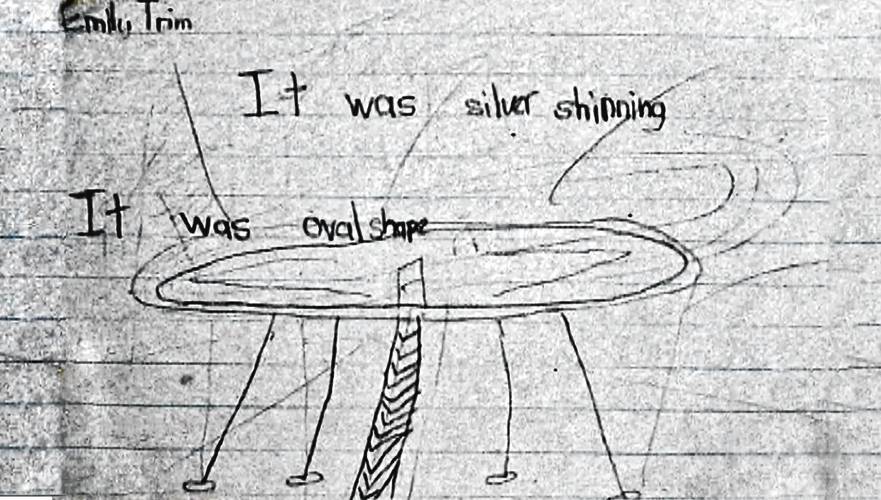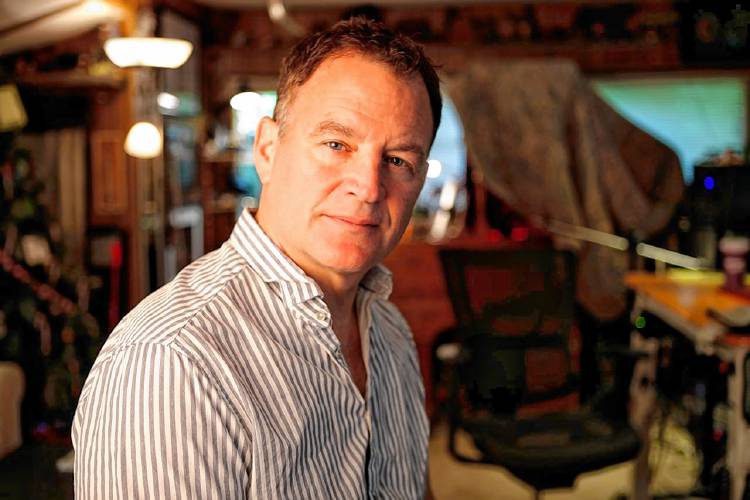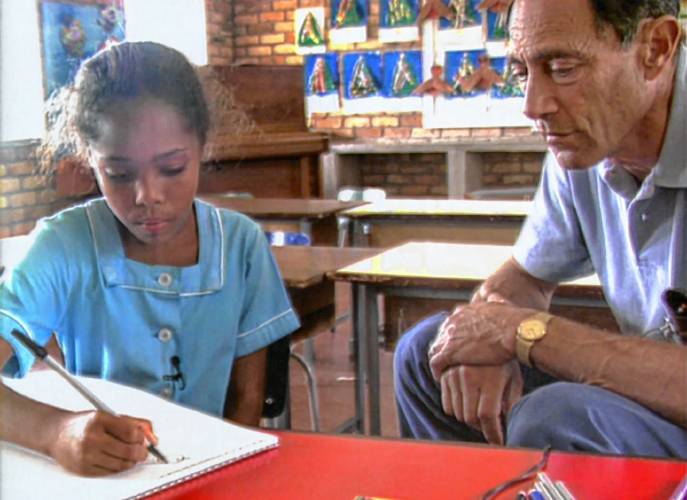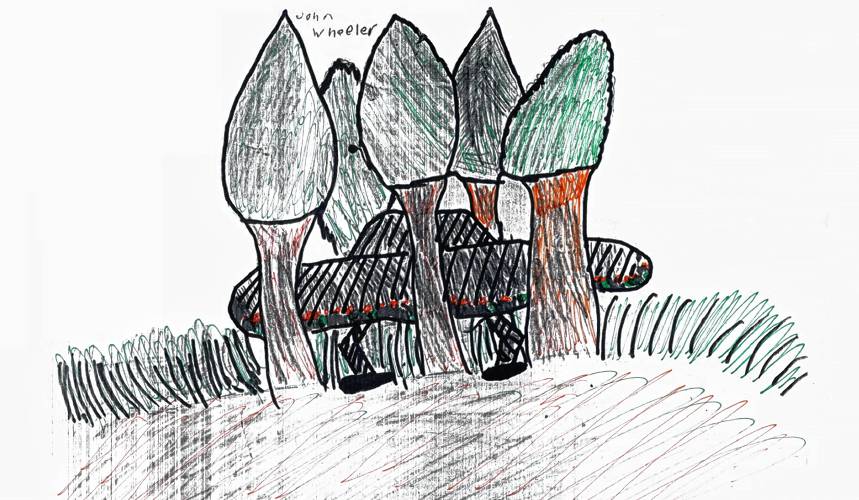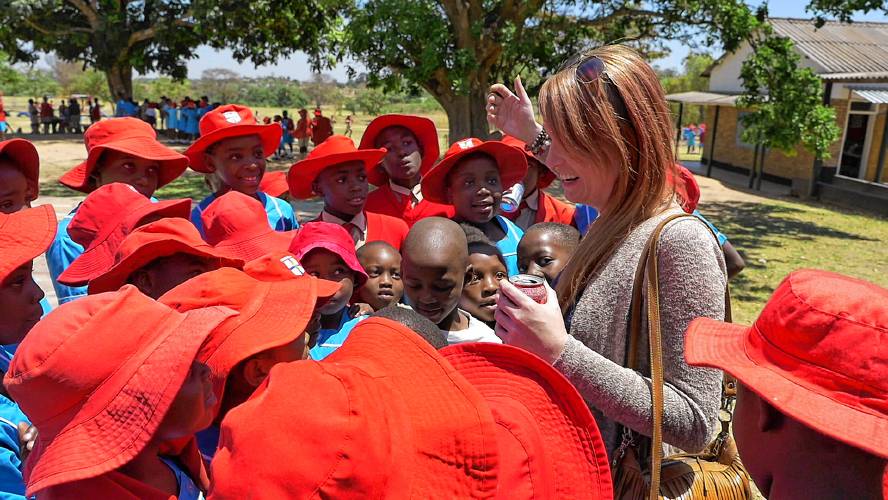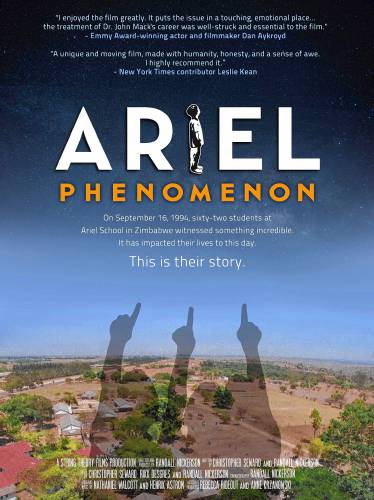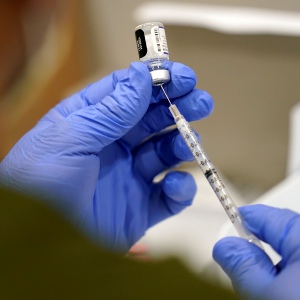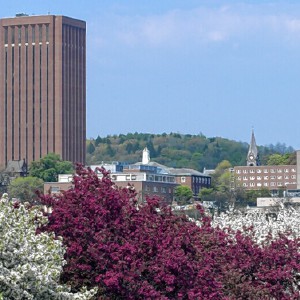What did the children see? Whately filmmaker’s documentary examines a famous UFO incident outside an African school
Staff Writer
Published: 10/6/2022 1:42:03 PM
It’s considered one of the largest mass sightings of UFOs in history: On September 16, 1994, outside a school in rural Zimbabwe, 62 young students playing during a morning recess reported seeing a strange, silver craft come down from the sky and land in a nearby field by a clump of trees.
Then, the students said, one or more humanoid creatures, dressed in what seemed like skin-tight black and making odd movements, approached them; some of the students said the creatures seemed to communicate with them telepathically, transmitting a message of concern about the damage human beings were doing to the Earth.
Soon enough it became a significant news story in Africa and other parts of the world, drawing in a veteran BBC producer and cameraman and a renowned Harvard psychiatrist, with everyone trying to determine what, if anything, the children had witnessed.
Now a Whately filmmaker and photographer has revisited the story, making the first full-length documentary about the events at what’s known as the Ariel School, including interviews with several of the former students, today in their 30s or approaching 40, about how the incident affected them.
But “Ariel Phenomenon,” which will have its first public screening tonight and Saturday (Oct. 7 and 8) at Northampton’s Academy of Music, is not so much an exploration of UFOs or science fiction but rather an examination of what it means to experience a strange, unsettling event and then feel compelled to keep it secret, fearing that talking about it will only invite disbelief, ridicule or worse.
Film director, producer and co-writer Randall Nickerson, a Whately native who splits his time between the Valley and New York City, says he first became familiar with the Ariel School story in 1995, when he saw some of the original TV footage of the event, particularly some interviews with the schoolchildren, who were in grades 1 through 6.
“I had no specific conclusion to draw from that,” he said during a recent phone call from Whately. “But I was impressed with what the children said — they seemed very authentic and consistent.”
In 2007, Nickerson says, he was approached by the John E. Mack Institute, named after the late Harvard psychiatrist who became involved with the 1994 story, to make a short documentary about interviews Mack did with the schoolchildren. Nickerson says he began re-examining the story but soon sensed there was much more to tell.
“The more I dug into the research, the more it seemed I could really only tell the story with a full-length documentary,” he said. “That hadn’t been my plan, and it ended up taking a lot longer than I thought it would — there was so much fundraising involved — but I felt I couldn’t put my name to (the film) without telling this deeper story.”
Nickerson’s film crew includes a number of area professionals with significant documentary credits, including co-writer and editor Christopher Seward of Ashfield, editor of the Michael Moore documentaries “Fahrenheit 911” and “Sicko,” and editor Rikk Degres of Florence, who has worked with filmmakers such as Ken Burns, Larry Hott and Diane Garey.
“Ariel Phenomenon” draws on archival TV footage from the 1994 event, including interviews with students, teachers, and the school’s headmaster, Colin Mackie. School officials had students separately draw pictures of what they had seen, and the film shows many of these examples, revealing the images were quite consistent. (School personnel had all been in a meeting when the students were outside.)
Mackie, in one of the early TV interviews, echoes what most of the teachers say as well: “I definitely feel (the students) saw something … I agree it could be something we’re not common with.”
In addition, the film relates that just a few days before the Ariel School incident, numerous UFO sightings — fast moving lights in the sky, without sound — had been reported across parts of southern Africa. Television stations and news organizations fielded dozens and dozens of inquiries and then produced stories on the incidents.
Nickerson and his crew — “I could never have made this film without them,” he says — also interviewed the late Tim Leach, a BBC cameraman and producer in South Africa who was the first journalist to visit Ariel School in 1994. Leach, a hardened war correspondent, was deeply drawn to the mystery of the children’s sightings, eventually to the detriment of his career at the BBC.
“I couldn’t handle this UFO thing,” he tells Nickerson. “It just didn’t make sense … I couldn’t get my head around it.”
Calling Harvard
Leach ended up calling Mack, the Harvard psychiatrist, about the story, and Mack came to Zimbabwe some weeks later to interview the children, footage of which is seen in “Ariel Phenomenon.” Mack, too, became convinced the children’s testimony was authentic, though some critics at the time claimed he had coached some of the responses; others believed the whole incident was a case of mass hysteria.
A few years earlier, Mack had also begun interviewing adults who said they’d had encounters with extra terrestrials, and “Ariel Phenomenon” relates how that work, plus Mack’s involvement with the Ariel School event, created a huge backlash for the professor.
“He got slammed from every quarter,” said Nickerson. “His credibility as a professional and an academic was really called into question.”
Many in the media couldn’t resist the storyline of a respected Harvard psychiatrist and Pulitzer Prize winner delving into UFOs, leading to news articles with mocking headlines, shown in the film, such as “Should Harvard beam him up?”
Another article with a “Star Trek” reference began with “Aliens land at Harvard! John Mack lends his reputation to a dubious starship enterprise.”
There is no overall narrator in “Ariel Phenomenon”; it’s core might be Nickerson’s interviews with the former students, now scattered across Africa, Great Britain, Canada, Australia and other countries. The filmmaker says he ended up spending about 15 months in Africa and also traveled to a few other countries to talk to over 40 of the students, though most did not agree to appear on camera.
“But their stories were still the same,” he said. “They didn’t say, ‘Maybe I was wrong’ or ‘I’m not sure what I saw.’ And they wanted me to tell the story … it’s something they’d been holding inside for so long.”
In the film, one woman says she’d never even told her husband what she’d witnessed. Another former student, who Nickerson says was serving in the British military when he interviewed him, says he’d also kept silent because otherwise “Most people would probably think I’m nuts.”
Nickerson puts another former student, Emily Trim, at the center of the documentary, showing her returning to the Ariel School some 20 years after her parents, missionaries from Canada, yanked her — she was in third grade at the time — and her two older siblings out of the school because they evidently could not deal with what their children described to them.
In one scene, a tearful Trim says “The people in my life who were supposed to be closest to me and part of my support system,” and then her voice trails off. Then she adds, “I didn’t feel it (support) was there.”
Nickerson says he also had an encounter when he was 10 with “something strange” and other-worldly, though he won’t provide details. But the experience has stayed with him and reinforced his belief that things happen in our world that can’t be readily explained — and that people who experience them should not be dismissed out of hand.
He notes that “Ariel Phenomenon” is screening at a time when there’s renewed focus and interest, including at high levels of government, on what has become more commonly known as UAP incidents: unidentified aerial phenomenon.
This spring, for instance, the U.S. Department of Defense held hearings before congress that described myriad sightings in the last couple of decades that navy pilots and other observers have made of mysterious flying objects that moved at unbelievable speed, or that seemed to lack any visible means of propulsion, defying human understanding of aerodynamics and physics.
In that sense, Nickerson hopes “Ariel Phenomenon,” which he’s looking to put on an online platform, will become part of that broader conversation and encourage other people “who have stories to tell about their experiences to come forward.”
“Ariel Phenomenon” screens at the Academy of Music Oct. 7 and 8 at 7 p.m. The Oct. 8 screening will be followed by a panel discussion, both live and remote, including with people who were at the Ariel School in 1994. More information is available at watch.arielphenomenon.com.
Steve Pfarrer can be reached at spfarrer@gazettenet.com.

[embedded content]
If Javascript is disabled in your browser, to place orders please visit the page where I sell my photos, powered by Fotomoto.
This article has been archived for your research. The original version from GazetteNET can be found here.

